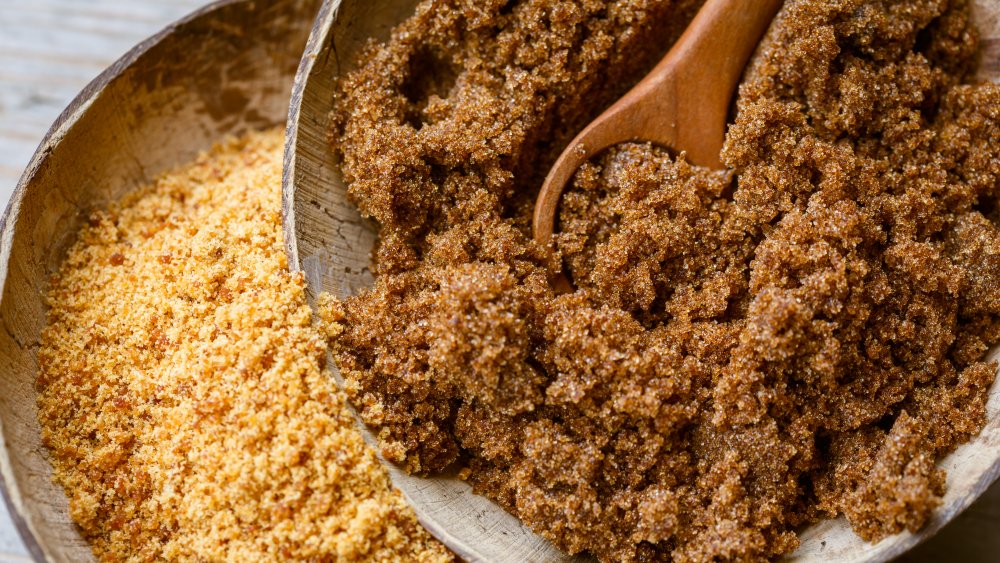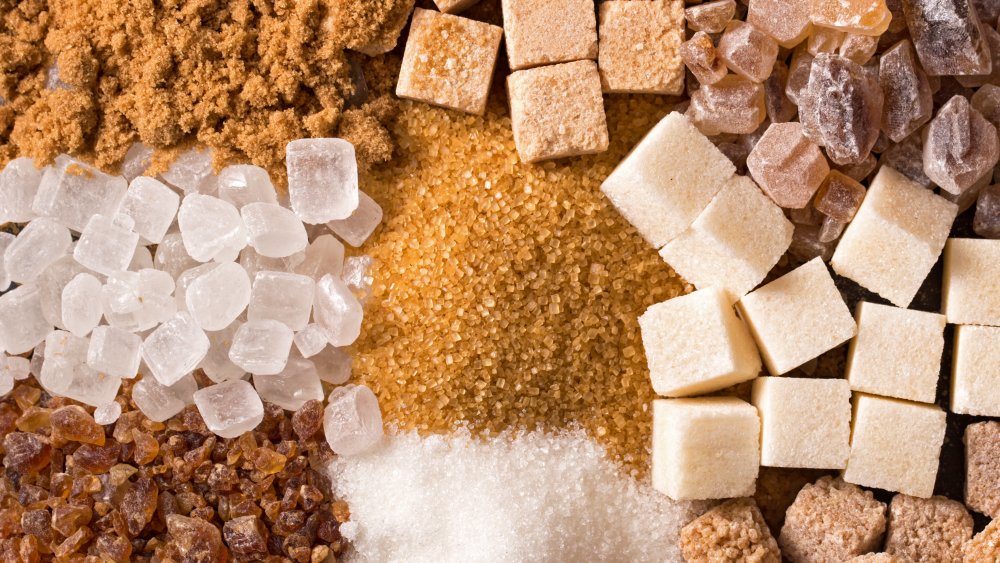The Real Difference Between Light And Dark Brown Sugar
Brown sugar is crucial to achieving the perfect, chewy chocolate chip cookie or a moist slice of banana bread, but have you ever stopped to wonder what it is and what makes the light version different from the dark? Well, you might be surprised to learn that there are actually five different types of brown sugar, according to The Sugar Association. The two versions you're probably familiar with, light and dark brown sugar, are usually made by either boiling brown sugar syrup or mixing plain white sugar with molasses.
The only difference between dark and light brown sugar is the amount of molasses; the more molasses it has, the darker it is (via Martha Stewart). That molasses is the reason you can pack brown sugar together like wet sand because it adds moisture to the sugar as well as flavor. It also means you can make it yourself, at home, with just two ingredients if you ever run out: white sugar and molasses. For light brown sugar, use one tablespoon of molasses for every cup of white sugar, and for dark use two tablespoons per one cup (via The Kitchn). You can mix it by hand or with a food processor, but either way, it shouldn't take long. But what about those other three kinds of brown sugars?
The real differences between turbinado, muscovado, and free-flowing brown sugar
If you've ever been at the store looking for brown sugar and instead found products you'd never heard of before, chances are those were different types of brown sugar. For instance, turbinado, also known as "sugar in the raw," is a much drier type of brown sugar that, instead of being mixed with molasses, is only partially processed. Turbinado contains a higher concentration of natural molasses and has a golden color and very mild flavor. It is only processed to the point that it's safe to eat, and that minimal processing affects turbinado's texture, giving it larger crystals than other kinds of brown sugar used for baking.
By contrast, muscovado sugar is much darker and wetter than turbinado in that way is more similar to traditional dark brown sugar. It is an unrefined sugar, so the natural molasses hasn't been removed. That gives it a bolder molasses flavor, making it ideal for adding complexity to savory dishes (via The Kitchn). Finally, free-flowing brown sugar, or granulated brown sugar, undergoes a special process to make it less moist so it can be poured without clumping up, like white sugar. This makes it ideal for sprinkling on top of foods like oatmeal or cookies (via The Sugar Association).

